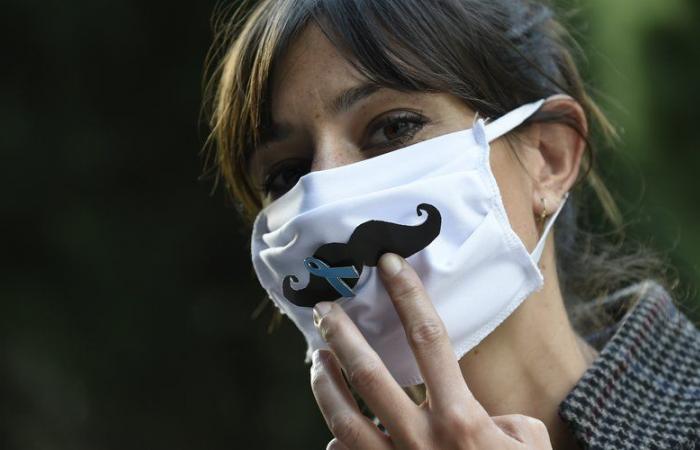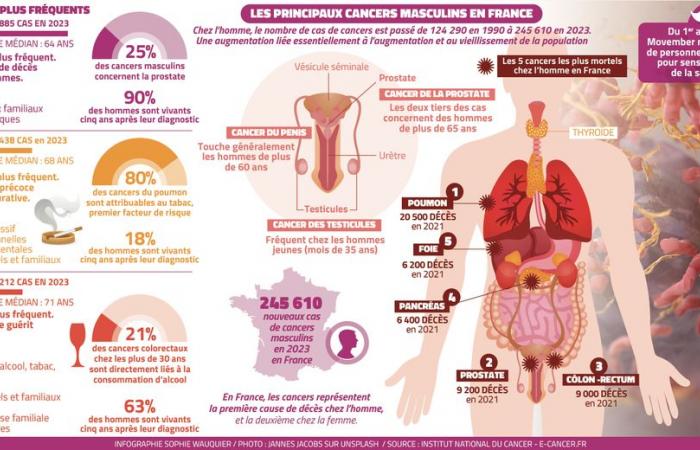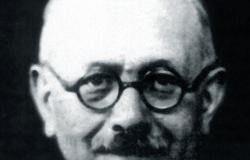The most common male cancer ahead of lung cancer and colorectal cancer, prostate cancer will affect 59,885 men in 2023. In November, Movember raises awareness of male cancers. In Montpellier, the funds raised during the third edition of Courstache, a charity race organized on November 10, will allow Dr. Gary-Bobo to continue research into innovative treatments.
Created to support local research into prostate cancer, La Courstache, which will start on November 10 at 10 a.m. from the Place de la Comédie in Montpellier, will raise funds for a research team from the Max Mousseron Institute of Biomolecules. , in Montpellier. Co-directed by Dr Magali Gary-Bobo, with Professor Alain Morère, it is looking for new vectors against early cancers.
Midi Libre – S.G.
How did your team come to work on prostate cancer?
At the Max-Mousseron Institute of Biomolecules, we carry out fundamental research on biomolecules for therapeutic purposes. These molecules must be capable of treating someone, of entering the human body, of carrying out the role for which they were designed, without generating any particular problems, without side effects.
My team works more precisely on nanoparticles or nanovectors, 10,000 times smaller than a grain of sand, and manufactured in the laboratory in a perfectly controlled manner. They are porous molecules. Inside these pores, we can introduce anticancer drugs, and even genetic material which will be able to correct the expression of certain defective genes in the event of the appearance of cancer.
And we can target cancer cell markers by directing these cells.
And what does your research show?
In the laboratory, we have managed to develop nanoparticles that are effective against cancer cells.
These inert nanoparticles must be activated to become toxic against cancer cells. For this, they are equipped with photo sensitizers sensitive to infrared laser radiation which will “excite” them, “wake them up”.
Infrared radiation is interesting because it is more penetrating and less toxic than UV, for example.
But why prostate cancer in particular?
We work on prostate cancer because the treatment is intended for solid tumors, and because many “small” cancers are not treated, because patients are too old, because we are waiting to see how they will evolve. .
As a result, these patients are placed under active surveillance. They have a sword of Damocles hanging over their heads.
However, prostate cancer has made enormous progress thanks to PSA testing, which makes it possible to identify increasingly smaller cancers.
We want to be able to offer focused, personalized, minimally invasive therapy, which will not be too difficult to accept. And which will ultimately be of interest to cancers other than prostate cancer.
Midi Libre – SOPHIE WAUQUIER
“It’s very complicated to find funds for research, we will be able to relaunch the project”
Your research started ten years ago, in 2014, what are the next steps?
Now that we have developed several types of nanoparticles covered with sugar analogs produced and patented by Alain Morère, co-director of the “Glyco and nanovectors for therapeutic targeting” team, and that we have shown that these nanoparticles are very effective on cancer cells in culture, tests must be carried out in animals.
Which should be possible with the funds raised during Movember…
Thanks to these funds, we hope to be able to launch research on zebrafish embryos, to which human cancer cells will have been grafted.
It’s very complicated to find funds for research, the funding we obtain for work depends on many parameters, and there are sometimes “fads”… This research was a bit on “stand-by”, we were lacking means to pursue it. We will be able to relaunch the project and work with peace of mind, without worrying about responding to calls for projects. This will be a huge time saver.
“We wanted to help local research”
“We were a group of four girls in the Femmes 3000 association. While running the Montpellieraine, which supports women with breast cancer, we had the idea of a symmetrical race for men” : after two years of “Bacchantes”, the first solidarity race to raise awareness of prostate cancer, Anne-Sophie Blau, president of the association, and her friends launched the Courstache, to control the destination of their donations.
“We wanted to help local research.” The funds collected during the first race were sent to the ICM, those from the second to the team of Catherine-Alix Panabières, at the Montpellier University Hospital, which works on circulating tumor cells.
Last year, more than a thousand registrations were recorded. There are still places left: on November 10, two races of 4 km and 8 km will start from the Place de la Comédie.
“Male cancers are taboo subjects even though there are many means of prevention,” recalls Anne-Sophie Blau.
Seduced by the project, the Montpellier hockey team, the Vipers, is also mobilizing, throughout the month of November, for the IBBM team: fundraising, selling jerseys at auction, participation in the Courstache …on November 23, at the kickoff of their match, they will present a check to Dr. Gary-Bobo.







